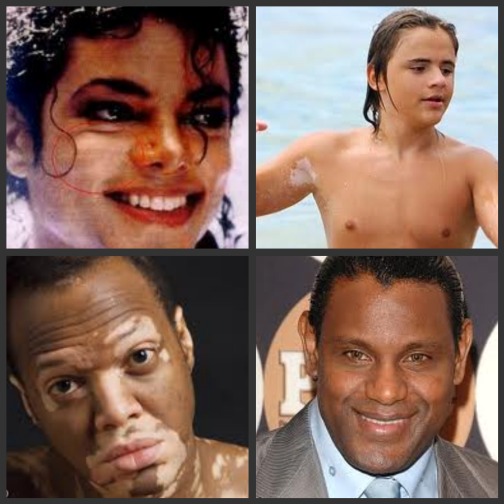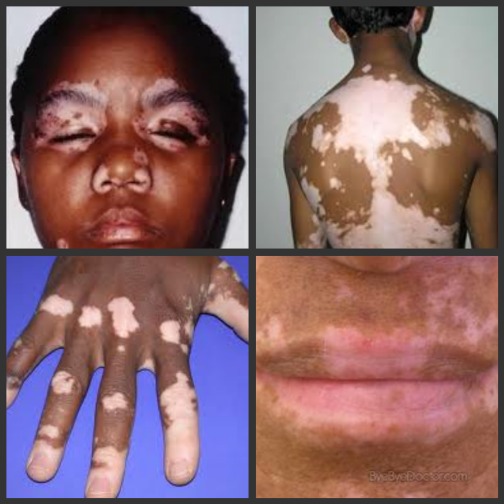Michael Jackson (top left), Son Prince Michael (top right), Lee Thomas (bottom right), Sammy Sosa (Bottom Right)
Believe it or not, Vitiligo is a disease and yes Michael Jackson had it. As shown above, it was recently revealed that Michael’s son Prince Michael also has vitiligo.
Vitiligo (vit-ih-LI-go) is a condition also called leukoderma is a condition in which your skin is characterized by chalky white patches of skin surrounded by a dark border, in which your skin loses melanin, the pigment that determines the color of your skin, hair and eyes. Vitiligo occurs when the cells that produce melanin die or no longer form melanin, causing slowly enlarging white patches of irregular shapes to appear on your skin.
Vitiligo affects all races, but may be more noticeable in people with darker skin. Vitiligo usually starts as small areas of pigment loss that spread with time. There is no cure for vitiligo. The goal of treatment is to stop or slow the progression of pigment loss and, if you desire, attempt to return some color to your skin.
SYMPTOM.The main sign of vitiligo is:
Pigment loss that produces milky-white patches (depigmentation) on your skin
Other less common signs may include:
Premature whitening or graying of the hair on your scalp, eyelashes, eyebrows or beard. Loss of color in the tissues that line the inside of your mouth (mucous membranes)
You also experience loss of or change in color of the inner layer of your eye (retina)
Although any part of your body may be affected by vitiligo, depigmentation usually develops first on sun-exposed areas of your skin, such as your hands, feet, arms, face and lips. Genitals also may be affected. Although it can start at any age, vitiligo often first appears between the ages of 10 and 30. Vitiligo generally appears in one of three patterns:
Generalized. In this most common subtype, pigment loss is widespread across many parts of your body, often symmetrically.
Segmental. Loss of skin color occurs on only one side of your body. This type tends to occur at a younger age, progress for a year or two, then stop.
Focal. Depigmentation is limited to one or a few areas of your body.
The natural course of vitiligo is difficult to predict.
Sometimes the patches stop forming without treatment. In most cases, pigment loss spreads and can eventually involve most of the surface of your skin.
Recommendation: Consult a oriental nutritionist/physician, Treat the affected area with moisturizer, avoid chemical cleansing agents, try the Herb Picrorrhiza to help reduce the number and size of unpigmented skin patches, St John Wort can help reduce stress and anxiety.
I’m not a medical doctor so any sharing of health educational information in this website should be taken as just that — the sharing of educational information. Please see the disclaimer link.


